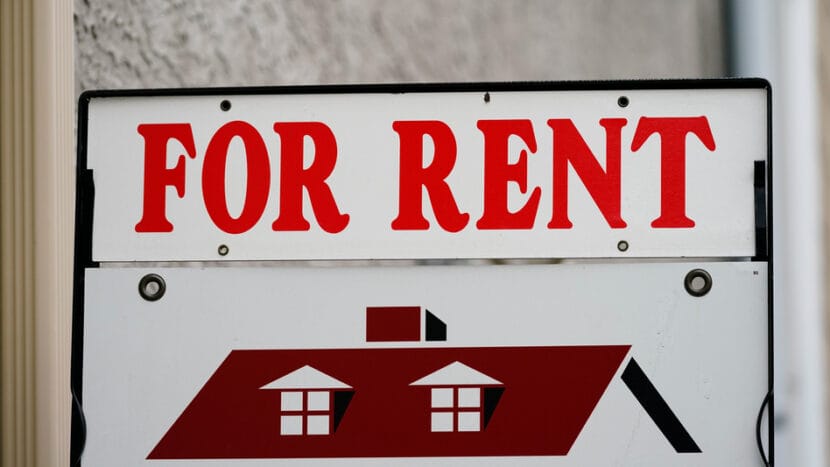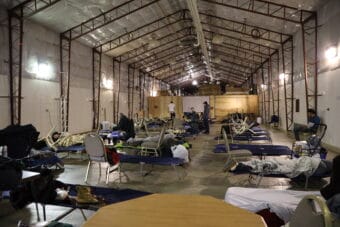
Over the past two years, Genuine Campbell was shocked at how rent for her two-bedroom apartment in Philadelphia just kept going up — from $1,300 a month to $1,600. She’s a single mom of four, and right as her rent was rising, her hours as a hotel valet were getting cut.
Add in utility costs plus inflation, and every month brought a wrenching decision.
“Do you want to pay the bills and then give half the rent, or do you want to try to do the whole rent and then be back on bills?” she says.
Campbell says the area isn’t even safe enough for her kids to play outside, but the rents are still way out of line with what she can make. “You have to work in, like, maybe a hospital or [as a] police officer … just to keep up with the rent,” she says.
In fact, more such households and many others also now struggle to pay rent, according to a newly released report from the Joint Center for Housing Studies of Harvard University. It finds that in 2022, as rents spiked during the COVID-19 pandemic, a record half of U.S. renters paid more than 30% of their income for rent and utilities. Nearly half of those people were severely cost-burdened, paying more than 50% of their income.
“We actually saw increases across every single income category that we look at, which sort of surprised us,” says Whitney Airgood-Obrycki, a senior research associate with the center and the report’s lead author.
Since 2019, the biggest jump in unaffordability was for households making $30,000 to $74,999 a year. Even among those working full time, a third of all renters were still cost-burdened.
For renters making under $30,000 — who already faced the most severe struggle to afford housing — Airgood-Obrycki “didn’t think it could possibly get that much higher.” But the report found it did nudge up, to an all-time high of 83% who are cost-burdened. She says the amount of money they have left over for all other household expenses has plummeted by nearly half, to just $310 a month.
And she says the compromises people traditionally make to get cheaper rent aren’t guaranteed these days.
“So you might not be living in as good of a neighborhood. You might be commuting farther. You might be sacrificing the quality of your school system,” Airgood-Obrycki says. “And often what we’re seeing is that even when people are attempting to make these trade-offs, they still end up paying too much for housing.”
As the Harvard report notes, U.S. homelessness rates hit a record high last year. The Biden administration and housing experts link that squarely to a severe housing shortage that has helped drive up prices.
“We simply don’t have enough homes that people can afford,” says Jeff Olivet, executive director of the U.S. Interagency Council on Homelessness. “And when you combine rapidly rising rent — that it just costs more per month for people to get into a place and keep a place — you get this vicious game of musical chairs.”
A cooling housing market isn’t likely to help those struggling the most
The double-digit rent hikes of the past few years are finally easing, and rents have even come down in some cities that saw the biggest jumps. A record number of apartments are also under construction, and as they come online, tight vacancy rates will loosen.
Still, prices for many people are still higher than before the pandemic, and the building boom is not likely to change that.
“What we are building is at the high end, because of the increased cost of construction and because we have a lot of demand from higher-income renters,” says Airgood-Obrycki. Most new apartments over the last decade have gone for $1,400 a month or higher, “and that’s not affordable to the majority of renters.”
At the same time, she says the market has lost millions of low-rent units for $600 a month or less. And these trends are continuing a long-term, growing gap in what people can afford. Since 2001, the Harvard report notes, median rents have risen by 21% while the median annual income for renters has risen just 2%.
The upshot is that millions more people qualify for federal housing subsidies. But those have been chronically underfunded, and the amount available has fallen further behind the need.
In Philadelphia, Campbell moved her family out of their unaffordable apartment and in with friends this month. She’s making a bit more working as a driver with Lyft, and also does people’s hair on the side.
Her plan is to stay until she gets her tax refund to help with a fresh start. She has already started looking around for a cheaper place, and hopes to find something for $1,000 or $1,100 a month.
“It’s like you’re dreaming of a fairy tale,” Campbell says. “But I’m going to try to find something that I can handle.”
9(MDEwMjQ0ODM1MDEzNDk4MTEzNjU3NTRhYg004))


